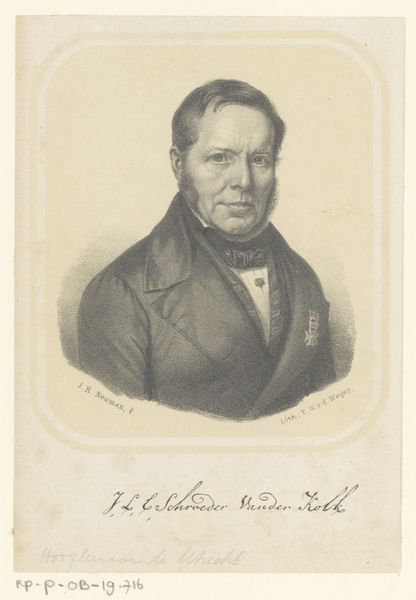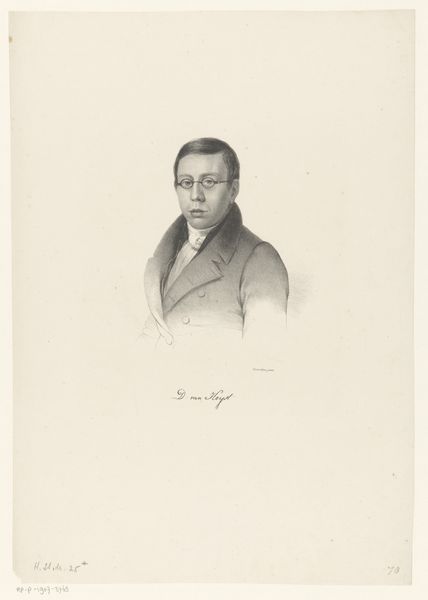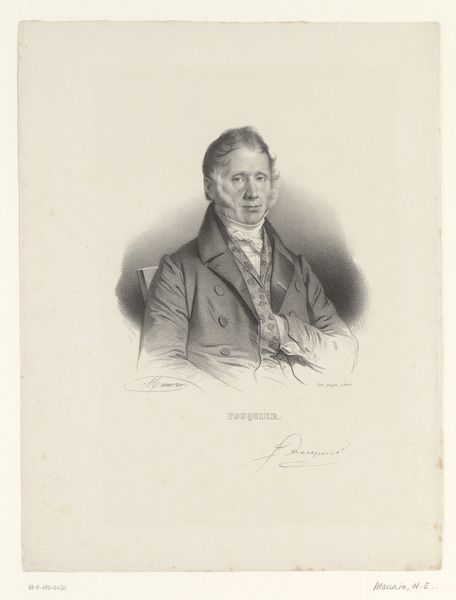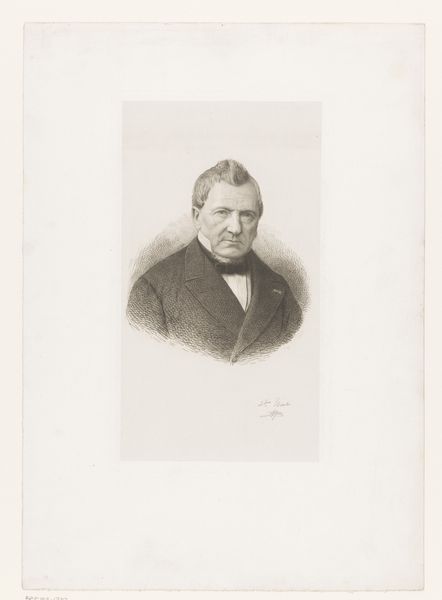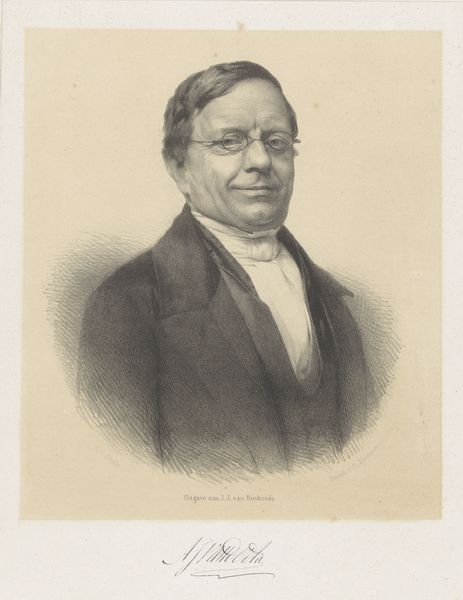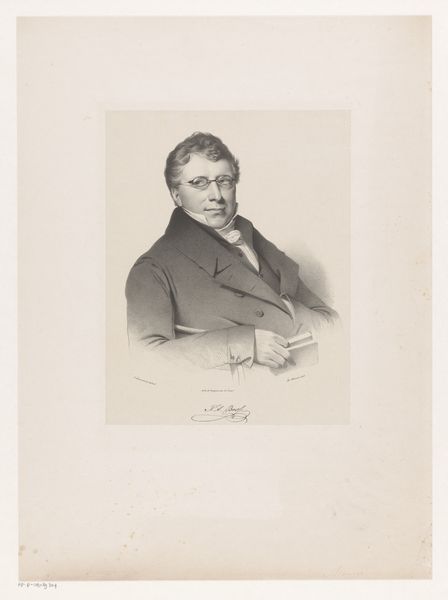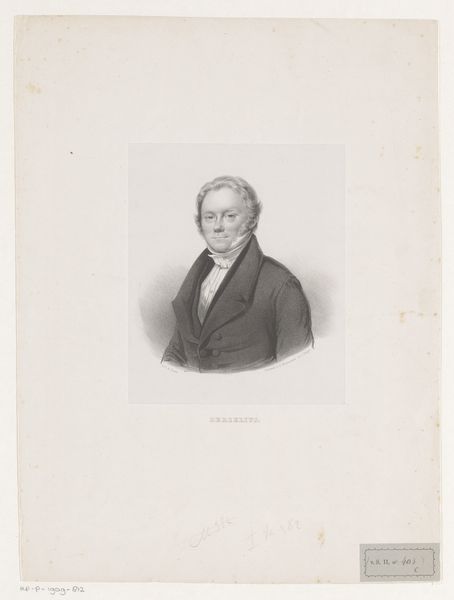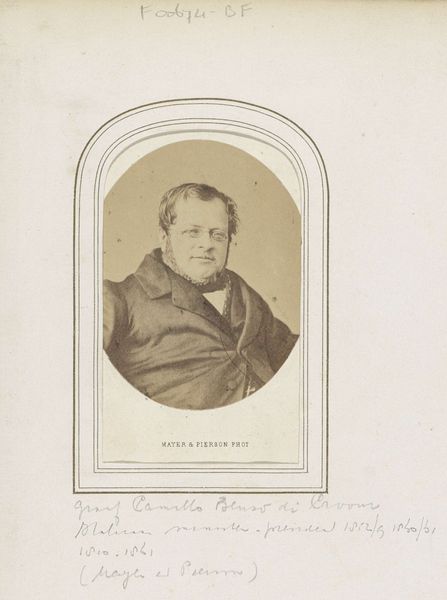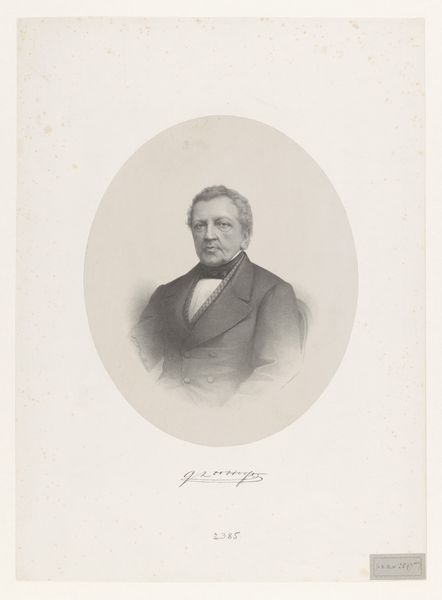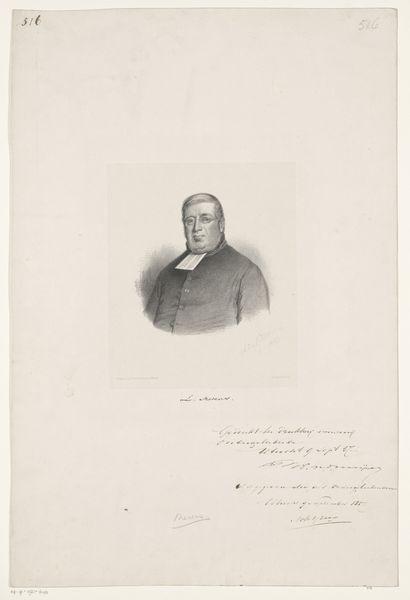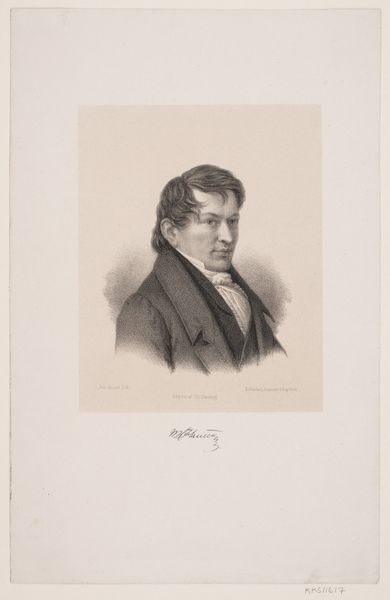
print, engraving
#
pencil drawn
# print
#
old engraving style
#
pencil drawing
#
portrait drawing
#
engraving
Dimensions: height 304 mm, width 220 mm
Copyright: Rijks Museum: Open Domain
Curator: Oh, he looks intense, doesn't he? This gentleman's caught my eye. Is it an engraving? There's such delicate work here, like spun sugar almost, especially in rendering of his face. Editor: You're right. What we see here is a print, from what I gather, an engraving capturing the likeness of Ferdinand de Braekeleer. Its creation spans the late 19th to early 20th century—1873 to 1909, to be precise. Curator: Braekeleer… the name rings a bell. He was an artist himself, wasn't he? I wonder if that scowl reflects something of the artistic temperament. The rendering is superb. Editor: Indeed, Ferdinand de Braekeleer was part of a family of prominent painters and this work provides a glimpse into the artistic circles of his time. But let's look closer: his expression…it's a product of its time, conforming to a certain stoic masculinity prevalent then, don't you think? Curator: Oh absolutely, though, there’s an interesting ambivalence here—his jacket is rendered with confidence, but look at the soft hatching around his eyes; you see hints of weariness and self-doubt. The work feels very human in spite of that masculine posturing, the formal attire. Editor: The artist is offering a view that complicates societal expectation by subtly humanising him. And portraits, then as now, served purposes beyond mere documentation; they helped construct and solidify identities. So who was Braekeleer attempting to portray himself to be? The somewhat austere almost unapproachable patriarch of the arts? Curator: Well, you see both private man and the artist. Perhaps it's both him wanting to show how he should be seen, and how he feels; and perhaps the artist made a point in trying to depict more. The subtle details create that vulnerability. That being said I really appreciate the medium itself. I like how an engraving gives this timeless quality. Editor: Exactly. And considering its place as a reproduced print means the portrait reached a wider audience and its message has circulated quite extensively, underscoring the important intersections between artistic representation, identity, and the sociopolitical frameworks of that time. This adds layers of complexity when contextualising his career! Curator: I am all the more pleased and thoughtful, now. There’s more to it than simply another old portrait. Editor: Agreed. These explorations enrich the ways we connect with both the piece itself and the layers that comprise its complex historical moment.
Comments
No comments
Be the first to comment and join the conversation on the ultimate creative platform.
